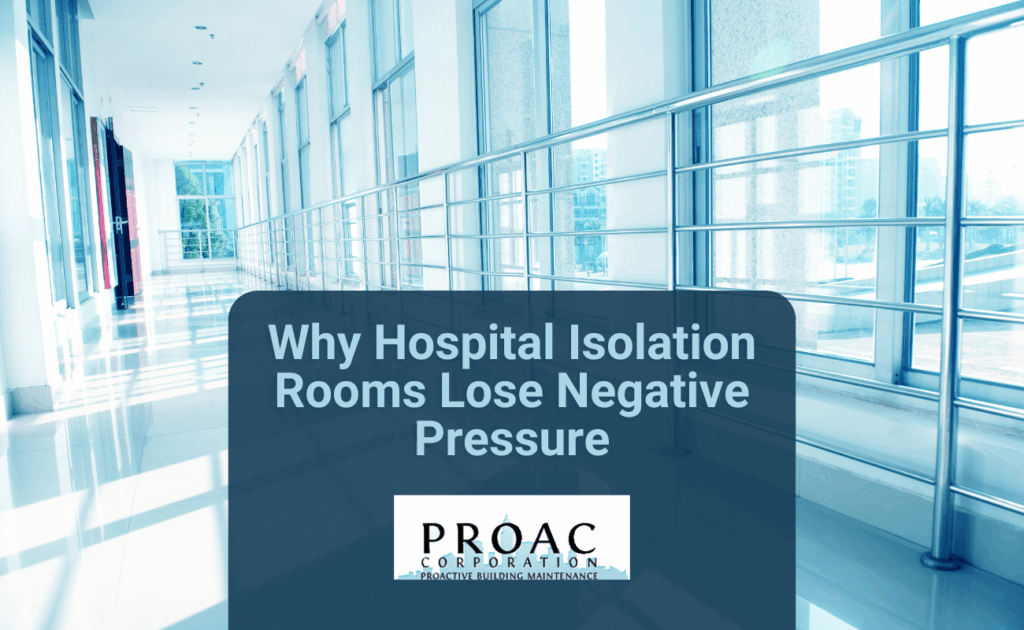Negative pressure rooms are critical for preventing transmission of airborne illnesses like coronavirus, influenza, and measles in hospitals and other healthcare buildings. By drawing in air to the room, negative pressure rooms prevent contaminated air from escaping into the surrounding space. But what happens if those rooms no longer function as intended? However you ended up finding this error, it is more than just a technical issue, and it poses a serious health risk for patients, staff, and visitors. Here are a few reasons as to why your isolation rooms aren’t staying at negative pressure.
Clogged Exhaust Ducts Or Filters Can Cause Pressure Issues
For an isolation room to have negative pressure, the space must have a constant and powerful pull of air out of the room. With constant use, dust, debris, and other pollutants will build up on the filters and ductwork, decreasing the airflow out of the room. If the exhaust pathway is blocked, the room can no longer maintain proper pressure. Without regular cleaning and inspection, this problem will gradually get worse until the room is compromised.
Pressure Loss Could Be Due To Improper HVAC Balancing
The system needs to draw out more air than it takes in in order to maintain negative pressure in a room. An HVAC system that’s not set up properly may force too much air into the space, eliminating the negative pressure. This frequently occurs if the airflow isn’t rechecked following repairs or maintenance. The space should be tested and adjusted frequently to ensure that it remains balanced and functions normally.
Negative Pressure Rooms Don’t Work With Undersized Exhaust Fans
Exhaust fans that are old, not maintained, or not large enough for your space are not able to move enough air to reach the proper pressure. The fans must be strong enough to do the task, even if the controls and ducting are in good condition. Testing exhaust fan performance is an essential first step when pressure problems occur.
Door Leaks And Poor Sealing Affecting Negative Pressure
The room envelope must be securely closed for negative pressure to work. Large door undercuts, open pass-throughs, or worn-out gaskets all compromise pressure by allowing excessive air exchange with nearby rooms. In high-traffic areas like hospital isolation rooms, these issues often go undetected until a problem is noticed.
Let PROAC Keep Your Isolation Rooms Secure and Reliable
All of the issues listed above can be prevented with regular system inspection and service. That’s where the team at PROAC Corp can help. Our team of experienced technicians specialize in HVAC systems in hospitals and other healthcare environments, and is ready to team up with you. Whether you are looking for air quality testing, preventive maintenance for negative pressure rooms, or our other services, our team is here to help. Contact us today to schedule a free consultation, and see what PROAC can do for your negative pressure rooms or HVAC system as a whole.

